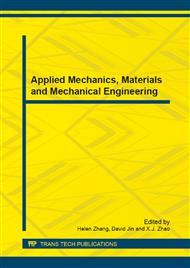p.110
p.115
p.120
p.125
p.133
p.138
p.147
p.152
p.159
Effect of Crack Statically Growing on Stress and Strain at Crack Tip for Power Hardening Materials
Abstract:
Crack statically growing would induce the re-distribution of the stress and strain at the crack tip for power hardening materials, and the process of crack statically growing would be affected by the change of the stress and strain at the crack tip. To understand the effect of crack statically growing on the stress and strain at the crack tip, a simulation and analysis of the stress and strain at the stable growing crack tip is performed by using elastic-plastic finite element software for the power hardening materials in this paper, which establishes a foundation for improving the capability of predicting environmentally assisted cracking growth rate in key structural materials of nuclear power plants.
Info:
Periodical:
Pages:
133-137
Citation:
Online since:
August 2013
Authors:
Price:
Сopyright:
© 2013 Trans Tech Publications Ltd. All Rights Reserved
Share:
Citation:


